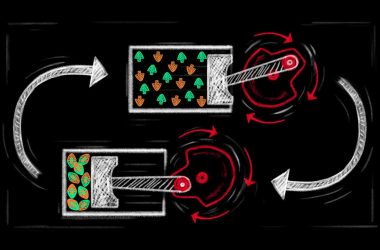Loofah sponges are made from the dried husks of luffa gourds
Andriana Syvanych/Shutterstock
Loofah sponges, which are the porous husks left after drying the fruit of luffa plants, have the potential to generate enough electricity when squeezed to power LEDs. Researchers believe that this discovery could pave the way for eco-friendly and affordable power sources for small devices. However, it is still unclear whether the energy produced by the sponges is sufficient for practical use.
While many electrically insulating materials can generate an electric charge when deformed, the size of the charge is usually very small. Jianxiang Wang and his team at Peking University in Beijing decided to investigate whether loofah, a common material used in kitchens and showers, could produce a larger charge. They chemically treated the dried sponge, removing certain polymers to leave behind a crystal form of cellulose.
When a 6-millimeter-thick section of the treated loofah sponge was squeezed by hand, it generated up to 8 nanoamps of electricity. By connecting it to an electrical circuit with capacitors to store the power, the squeezed sponge was able to briefly power six LED lights.
Wang suggests that loofah sponges could be a cost-effective and environmentally friendly solution for creating small power sources for various devices. However, he also acknowledges that an artificial version of loofah with similar microstructure and chemical properties may be necessary to increase the amount of electricity generated. Such an alternative could be easier to produce.
Andrew Bell, a researcher at the University of Leeds, UK, is skeptical about the practicality of this approach. He points out that the ratio of electrical power to mechanical input from squeezing is smaller compared to other piezoelectric materials like lead zirconate titanate, which limits its usefulness in practical applications. Bell believes that the impact of this technology will be minimal.
Topics:
- electricity/
- materials science












